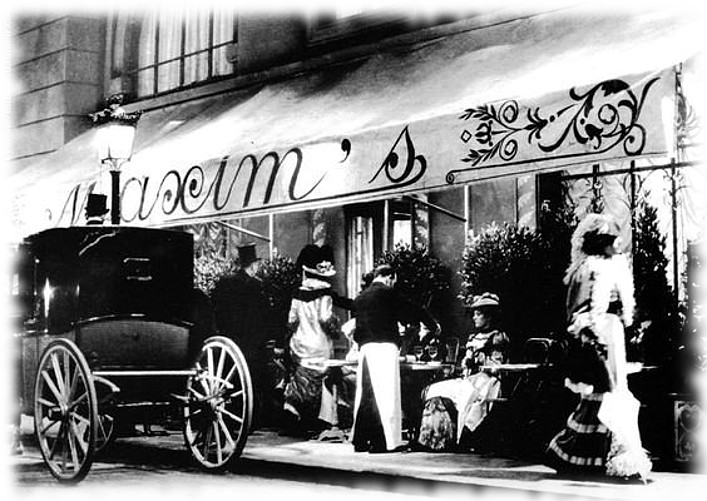Maxim's: Difference between revisions
No edit summary |
|||
| Line 29: | Line 29: | ||
== Websites == | == Websites == | ||
http:// | http://maxims-de-paris.com/en/restaurant | ||
Revision as of 14:10, 30 July 2017
History
Maxim's was founded as a bistro in 1893 by Maxime Gaillard, formerly a waiter. It became one of the most popular and fashionable restaurants in Paris under its next owner, Eugene Cornuché. Cornuché gave the dining room its Art Nouveau decor and made sure that it was always filled with beautiful women. Cornuché was accustomed to say: "An empty room... Never! I always have a beauty sitting by the window, in view from the sidewalk." It was so famous that the third act of Franz Lehar's operetta The Merry Widow was set there.
Over the Next Century
n 1913, Jean Cocteau said of Maxim's: "It was an accumulation of velvet, lace, ribbons, diamonds and what all else I couldn't describe. To undress one of these women is like an outing that calls for three weeks' advance notice, it's like moving house."
In 1932, Octave Vaudable, owner of the restaurant Noel Peters, bought Maxim's. He started selecting his clients, favouring the regulars, preferably famous or rich, beginning a new era of prestigious catering under the famous Vaudable family which lasted more than half a century. Famous guests of the 1930s included Edward VIII and Jean Cocteau, a close friend and neighbor of the Vaudables. The playwright Georges Feydeau wrote a popular comedy called La Dame de chez Maxim ("The Lady from Maxim's").
Maxim's was also immensely popular with the international celebrities of the 1950s, with guests such as Aristotle Onassis, Maria Callas, the Duke of Windsor and his wife Wallis Simpson, Porfirio Rubirosa, Max Ophüls, and Barbara Hutton. When the restaurant was renovated at the end of the decade, workmen discovered a treasure trove of lost coins and jewelry that had slipped out of the pockets of the wealthy and been trapped between the cushions of the banquettes.
In the 1970s, Brigitte Bardot caused a scandal when she entered the restaurant barefoot. Other guests of this time period were Sylvie Vartan, John Travolta, Jeanne Moreau, Barbra Streisand, and Kiri Te Kanawa. It was during the fifties, sixties and seventies that Maxim's, under the management of Octave Vaudable's son, Louis Vaudable, became the most famous restaurant in the world but one of the most expensive ones as well. With his wife Magguy, Louis Vaudable assured Maxim's international reputation.
François Vaudable, who had been directing the restaurant by his father's side for years, pursued the work of his family which gave Maxim's its era of glory. In 1981, more attracted by the scientific field than by the jet-set, the Vaudables offered to sell Maxim's to fashion designer Pierre Cardin. A rich Arab had offered to buy the restaurant, but they were upset at the idea of it falling into foreign hands. Cardin eventually accepted the offer. Under his management, an Art Nouveau museum was later created on three floors of the building and a cabaret was established which Cardin filled each night with songs from the beginning of the 20th century.
The chefs who worked at Maxim's included a young Wolfgang Puck.
A New York location was opened in 1985 but it closed in 2000.
In Popular Culture
Maxim's is featured in Lehar's opera, The Merry Widow.
Two sequences in the 1958 musical film Gigi were photographed on location at Maxim's.
Maxim's is featured in the Woody Allen film Midnight in Paris.
